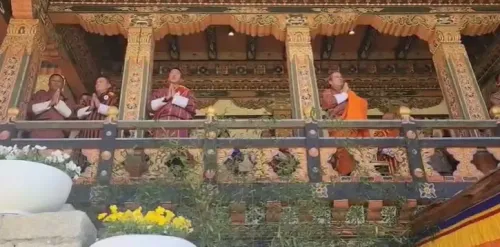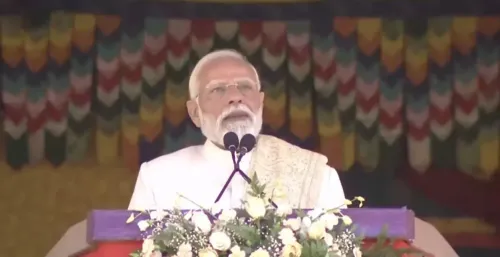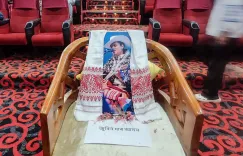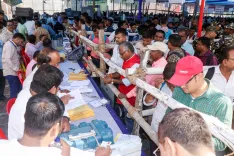What Happened in Islamabad? At Least 12 Fatalities in Court Blast

Synopsis
Key Takeaways
- 12 fatalities confirmed from the blast.
- 21 individuals injured, including lawyers.
- Emergency declared at Pims hospital.
- Rising security concerns in Khyber Pakhtunkhwa.
- HRCP reports alarming trends in violence.
Islamabad, Nov 11 (NationPress) A devastating suicide blast outside a court complex in Islamabad, Pakistan, has tragically claimed the lives of at least 12 individuals and left 21 others wounded, as reported by local media citing police officials.
The explosion occurred from a vehicle parked near the courthouse, with victims reportedly including both petitioners and legal representatives. In the aftermath, court activities were halted, and individuals within the building were evacuated through a rear exit, according to information from Geo News.
Following the blast, the Islamabad Deputy Inspector General, Chief Commissioner, and forensic teams promptly arrived at the scene. Emergency responders and law enforcement have transported the deceased and injured individuals to local medical facilities, with Pims hospital declaring a state of emergency.
Security challenges have plagued Pakistan, particularly in the Khyber Pakhtunkhwa and Balochistan regions, in recent years. Reports indicate that 138 individuals and 79 police officers have lost their lives in terrorist incidents across Khyber Pakhtunkhwa in the first eight months of 2025.
The Human Rights Commission of Pakistan (HRCP) has expressed grave concerns regarding the deteriorating security and human rights landscape in Khyber Pakhtunkhwa, emphasizing the climate of fear, lawlessness, and the diminishing influence of civilian authorities.
In a recent investigative report titled 'Caught in the Crossfire', the HRCP highlighted that nearly two-thirds of all reported attacks in Pakistan during 2025 have occurred in Khyber Pakhtunkhwa, predominantly targeting security forces and law enforcement.
The report points to the merged districts as the epicenter of violence, where residents endure insecurity, forced displacements, and restricted access to justice.
According to the HRCP, testimonials from affected communities reveal a growing discontent with arbitrary arrests, the ongoing operation of internment facilities established under the Actions (in Aid of Civil Power) Ordinance, 2019, and the persistent issue of enforced disappearances.
The report also notes that journalists who cover these critical issues often face censorship, threats, and targeted violence, which further hampers transparency and freedom of expression. Tribal leaders, political activists, and peace advocates are also at risk, contributing to a profound sense of insecurity and distrust.









